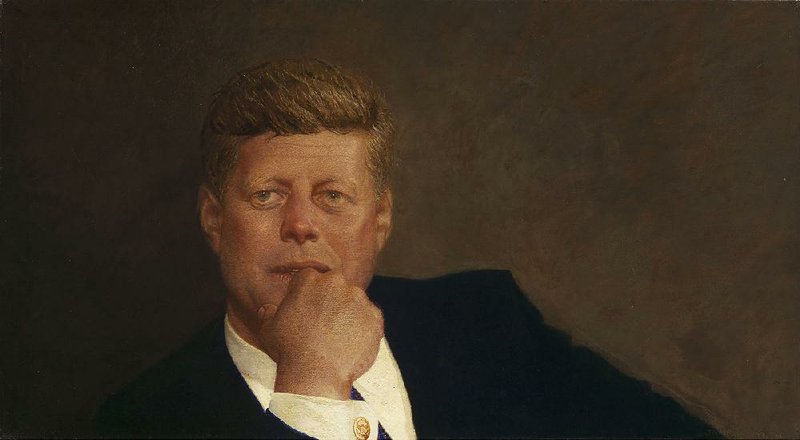BENTONVILLE -- "I am uncomfortable looking at my older work," Jamie Wyeth says. However, he seems fairly comfortable talking about it. Here are some of Wyeth's comments on specific works in "Jamie Wyeth" at Crystal Bridges Museum of American Art:
• Portrait of John F. Kennedy, 1967, oil on canvas
"I was very swept up with President Kennedy. I followed Robert and Ted Kennedy around for a while to help me get some life in the painting. I destroyed one version, went to this rather intense one. I thought it was a reflection of his mind.
"Jackie [Kennedy] liked it; she thought it was highly personal. Bobby hated it. He thought it looked like the president during the Bay of Pigs crisis. I think many people wanted a young, vibrant John Kennedy. In this painting, he looks like a man who has problems to deal with. When it was first reproduced, I got hate mail."
The painting later appeared on an Irish stamp. Wyeth painted the JFK portrait over one he'd done of his brother, Ted.
• Pumpkinhead -- Self Portrait, 1972, oil on canvas
Wyeth was invited to join the National Academy of Design, which required a self-portrait.
"I love pumpkins and Halloween, so I did a self-portrait with a pumpkin over my head. It's a little edgy, the expression is kind of a sneer. They rejected it."
That painting, along with the 1969 self-portrait the academy accepted, are in the show.
• Bale, 1972, oil on canvas
"I couldn't sleep at night when I was working on that bale of hay; I was obsessed ... I wanted it to be a definitive portrait."
• Dreams play a role in several works.
Three oil paintings known as the "recurring dreams series" hang at the end of the exhibition -- Sea Watchers (2009), The Sea, Watched (2009) and A Recurring Dream (2011). Andrew and N.C. Wyeth are depicted at the shore in all three, with Andy Warhol in the distance in the first two and Winslow Homer included on the second.
Why use seagulls to depict the Seven Deadly Sins?
"Seagulls are perfect, they really work in these pieces. They are aggressive, vicious birds."
• Patriot's Barn, 2001, watercolor, gouache and pastel on toned rag board
Right after the terrorist attacks of Sept. 11, 2001, Wyeth came across a Brandywine Valley barn with an enormous painting of the American flag on it. In his painting, Wyeth has a reflection of part of the flag in a pond, which evokes a sense of mourning.
"I just felt I needed to record it," Wyeth says. "The farmer was a patriot; he was in World War II and Korea."
The painting was reproduced on the cover of TV Guide.
• Portrait of Shorty, 1963, oil on canvas
Wyeth was 17 when he painted Shorty, which evokes an aura of Flemish portraiture.
"There is a lot of angst in Maine," he says. "Life is tough, the islanders are tough." A few years later, the impresario Lincoln Kirstein described Wyeth as the finest American portrait painter since the death of John Singer Sargent.
Style on 08/09/2015
